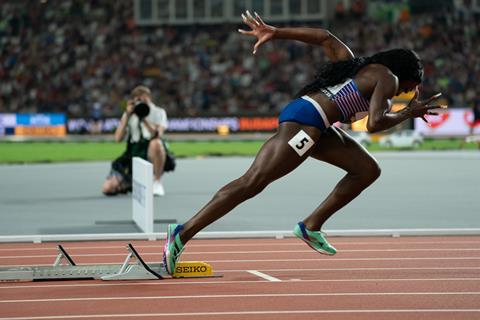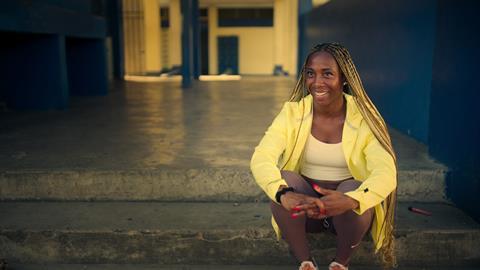Netflix’s Sprint docuseries delves into the lives and careers of the world’s fastest men and women

Box To Box’s latest Netflix docuseries, Sprint, becomes available from 2 July, documenting the lives of the world’s fastest men and women.
Releasing ahead of the Paris 2024 Olympics, the first series includes Sha’Carri Richardson, Shelly-Ann Fraser-Pryce, Noah Lyles, Shericka Jackson, and other 100m runners from the US, Jamaica, the UK, Ivory Coast, Kenya, and Italy. It was produced in association with the Olympic Channel as one of three commissions from a partnership between Netflix and the IOC, and will be quickly followed by a second series after the Olympics.
Box To Box head of sport and factual Warren Smith exec produced the show alongside Paul Martin and James Gay-Rees, and worked with series director Phil Turner to try and bring the world of sprinting to viewers. This had it’s own unique challenges, beginning with following a sport where the top athletes rarely face each other in races.
Smith explained to Broadcast Sport, “We’ve had to look at it from a different angle than we would have done on a Formula 1, where you know that every single athlete is going to be at every single event and race, because that’s not the case in sprinting.
“What it does mean is that when you do get that moment where two key athletes come head to head, it’s fireworks.”

How to show those fireworks was the next step, with the majority of viewers perhaps not aware of just how quick these athletes are from watching normal broadcast angles of the races. Smith noted, “Obviously we use those angles because they document the narrative of the race, but when you see the angles that we get in training, on the warm up track, and also during the live events, I think it will show the viewer just how quick these men and women really are.”
Turner revealed the techniques he used to do this, “Using as small cameras as possible to try and keep up with it, in a non-broadcast way – not a long lens from a thousand miles away, but from a very low angle.”
He added: “We put cine lenses on and shot it a little bit differently, prime lenses to capture it, high shutter speed to get the crispness of the movement.” Inspiration came from the Normandy landing scene in Saving Private Ryan, the energy and movement of which has, “stuck with,” Turner - and he kept to this even when it meant potentially putting himself in harm’s way: “Crossing the track is a nightmare! There are people running around the track and you think someone’s over there, and within a second they’re on you. You just do not cross. It’s quiet and the, boom, you hear the footsteps. It’s such a weird, fast space.”

Smith also wanted to avoid using slow motion too often, as it could take away from the speed of the runners, and added another area where this production had a major difference with other Box To Box docuseries - the company had to do a lot more of the capturing itself: “For a lot of our other sports, we work closely with the teams behind the PGA tour, behind Formula 1, to supplement and elevate some of their footage. With this, we had to do a lot of the heavy lifting ourselves.
“Especially in the Diamond League events, the World Championships and the Olympics are obviously beautifully covered, and the Diamond League is beautifully covered, but they don’t have the opportunity and the budgets to have 80 cameras on the 100m.”
However, this didn’t trouble Turner, who believes the Diamond League deserves more coverage as it’s, “truly cool to watch.” His strategy was to, “We can set up our cameras pretty much anywhere in the stadium, or we have access to broadcast cameras. But where are the cameras not looking is the question I’m asking.
“I’m looking in in the tunnels, in the industry, the call rooms, the warm up tracks, the hotels, the malls.”






No comments yet